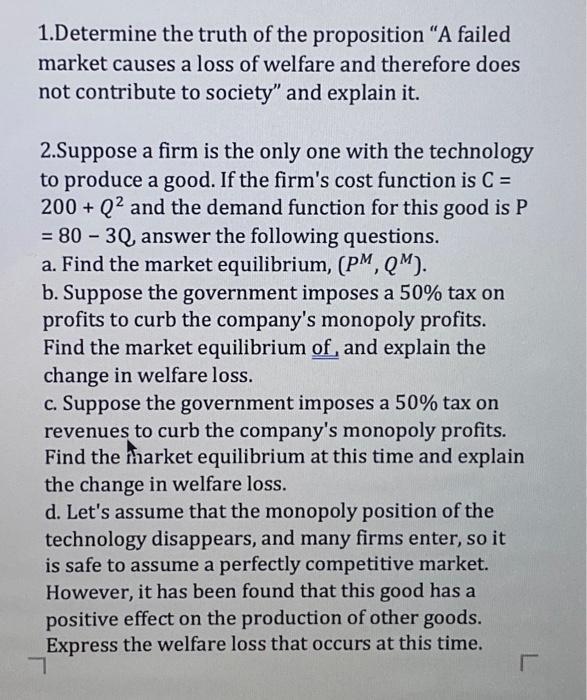Answered step by step
Verified Expert Solution
Question
1 Approved Answer
1.Determine the truth of the proposition A failed market causes a loss of welfare and therefore does not contribute to society and explain it.

1.Determine the truth of the proposition "A failed market causes a loss of welfare and therefore does not contribute to society" and explain it. 2.Suppose a firm is the only one with the technology to produce a good. If the firm's cost function is C = 200+ Q and the demand function for this good is P = 80 - 3Q, answer the following questions. a. Find the market equilibrium, (PM, QM). b. Suppose the government imposes a 50% tax on profits to curb the company's monopoly profits. Find the market equilibrium of, and explain the change in welfare loss. c. Suppose the government imposes a 50% tax on revenues to curb the company's monopoly profits. Find the market equilibrium at this time and explain the change in welfare loss. d. Let's assume that the monopoly position of the technology disappears, and many firms enter, so it is safe to assume a perfectly competitive market. However, it has been found that this good has a positive effect on the production of other goods. Express the welfare loss that occurs at this time. 7 r
Step by Step Solution
★★★★★
3.40 Rating (163 Votes )
There are 3 Steps involved in it
Step: 1
1 The proposition A failed market causes a loss of welfare and therefore does not contribute to society is generally true When a market fails it means that it does not efficiently allocate resources a...
Get Instant Access to Expert-Tailored Solutions
See step-by-step solutions with expert insights and AI powered tools for academic success
Step: 2

Step: 3

Ace Your Homework with AI
Get the answers you need in no time with our AI-driven, step-by-step assistance
Get Started


